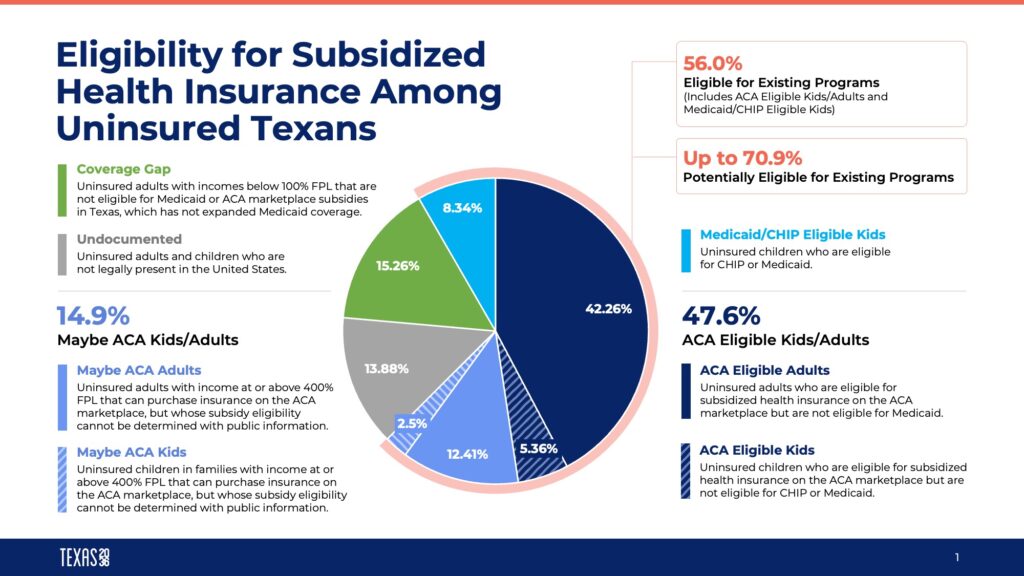1M+ uninsured Texans likely qualify for no-cost health coverage
A new study from Texas 2036 offers hope that millions of uninsured Texans could obtain free or subsidized coverage through existing programs.
Texas 2036 estimates that between 2.7 and 3.5 million Texans are eligible for free or subsidized health coverage through existing ACA subsidies, Medicaid or the Children’s Health Insurance Program (CHIP). Nearly 1.5 million appear to be eligible for subsidies through the ACA large enough to cover the full premium cost of at least one plan, while another 400,000 children appear to be eligible for Medicaid or CHIP.

The number of uninsured Texans has been a persistent challenge to the state. Today, the number of Texas residents lacking health insurance is nearly 5 million, representing more than 16% of the total population. While this percentage is lower than it has been in recent years, it remains the largest percentage of any state and more than double the national average.
As part of a long-term effort to address this crisis, Texas 2036 conducted a multi-year study to identify systemic, behavioral and psychological obstacles to Texans gaining affordable coverage.
Key findings of the report include that Medicaid expansion alone – while a fiscally efficient solution for the state to reduce the uninsured rate – won’t solve Texas’ uninsured crisis by itself as many uninsured Texans have middle-class incomes, and nearly twice as many uninsured Texans are currently eligible for a free ACA plan as are in the coverage gap.
“Our previous analysis of the potential impact of Medicaid expansion in Texas exposed the problem as being larger than any one-size-fits-all solution,” said Texas 2036 Senior Policy Advisor Charles Miller. “We decided to listen to the people we’re trying to help, to hear the barriers they perceived. That process allowed us to see that many uninsured Texans could be helped by making existing programs work more efficiently and effectively.”
The study suggests that Texas policymakers could make significant inroads toward reducing the state’s uninsured population by increasing awareness of the availability of affordable health coverage options, reducing bureaucratic and administrative complexity during the enrollment process, and improving the customer experience for Texans seeking out coverage.
“This groundbreaking study will provide policymakers and the public with a holistic and detailed view of the uninsured population in Texas,” said John Hryhorchuk, Texas 2036 Senior Vice President of Policy and Advocacy. “This comprehensive overview can help inform the development of consensus solutions to further increase the number of Texans with coverage.”
To download the full report, visit www.texas2036.org/uninsured
